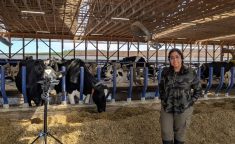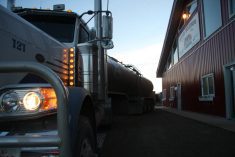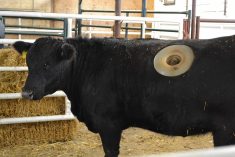Southern Alberta – the land of short grass and jokes about getting a half-inch that time that the Bible says it rained 40 days and 40 nights.
For the second year in a row, spring seeding is on hold and the jokes are more likely about an old guy being seen rounding up animals in pairs.
The long, cold winter has pushed frost deep into the ground, freezing waterlines that have never quit running before. Even worse, in some areas fields are so wet, septic fields have quit working properly and people have to limit water use to prevent backups.
Read Also

Moo translator and methane measures: There’s an app for that
Dalhousie University researchers use artificial intelligence to create new dairy farm apps that analyze cattle sounds and measure methane.
Spring seemed to be under way by the second week of April, but most fields were still too we. The only tractors to be seen in fields weren’t pulling drills, but running pumps pulling water off the fields in hopes of getting some seeding done in April. One farmer with some light land and a disk drill ready to go was able to put in about 300 acres of crop, but as of press time last week it was estimated that less than 5,000 acres had been seeded across southern Alberta.
Then, by the middle of the month, the entire region got another inch or two of moisture, mostly as heavy snow, but rain further east.
“The best-case scenario is for seeding to start May 1,” said Ross McKenzie, agronomy research scientist with Alberta Agriculture. “But, even at that, sloughs that are more than a foot deep just won’t dry up in time for seeding. That’s a significant area of cropland that almost certainly won’t be seeded this year.”
Those areas that can’t be seeded represent a lot of lost yield, says McKenzie. Weeds will take hold and create more problems in future. Without a drier-than- usual summer, sloughs perpetuate themselves, becoming worse year after year. With no growing crop to pull water out of the soil, it accumulates, so it takes very little precipitation to form a slough. The following year, the cycle repeats itself and the sloughs and ponds become permanent features.
McKenzie says May 1 has been identified as the point when potential yields start to drop for every spring-seeded crop. “After May 1, you lose yield every day,” he said. “Generally, I’d seed the crops that lose most yield per day first. Probably canola first and then durum, with hard red spring wheat later and flax last. Of course, you have to think about crop value and look at all the cropping options as well as yield losses and other risks and benefits,” he said.
McKenzie said frost is always a concern with canola, but hybrid types are more tolerant. Plans for canola might have to change for wet and crusted soils – wheat or barley might look better.
“Remember that roots spread through the soil more slowly in cold wet conditions, so don’t skimp on seed-placed phosphorus,” McKenzie said. “Seed treatment is especially important this year because of the low germination levels and low vigour of much of the seed from last year.”
McKenzie has seen one bright spot this spring. His winter pea and winter lentils “have never looked better.” He also has some winter canola trials of breeder lines that he says “look fabulous.”
———
“AfterMay1,you loseyieldeveryday. Generally,I’dseedthe cropsthatlosemostyield perdayfirst.”
ROSS MCKENZIE














